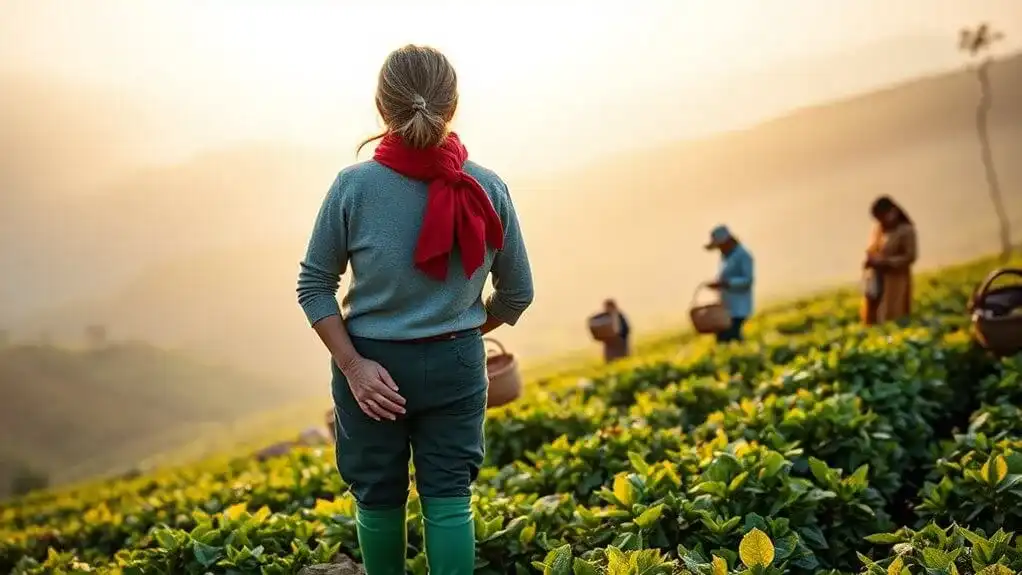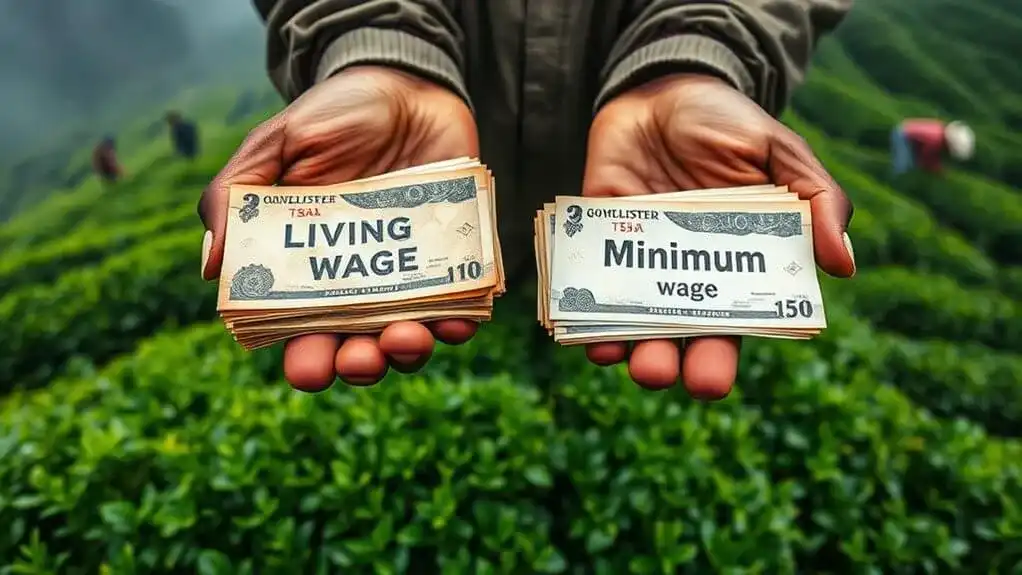Sustainable tea production increases costs by 20-30% due to eco-friendly practices, fair labor wages, and advanced technology implementation. However, these practices result in premium pricing, with certified sustainable teas commanding up to 625% more than conventional options. While small-scale farmers face initial financial hurdles, the long-term benefits include improved soil health, better working conditions, and superior tea quality. Understanding tea's true cost reveals a complex relationship between sustainability, pricing, and social impact.
Key Points
- Sustainable tea production increases costs by $0.50-$2.00 per unit but commands premium prices up to 625% higher than conventional teas.
- Climate change impacts directly affect tea quality and yields, with each degree increase above 28°C reducing production by 4-4.6%.
- Investment in precision agriculture and automated harvesting technology improves quality consistency while reducing long-term labor costs.
- Fair labor practices and better working conditions increase production costs but result in higher-quality tea and more sustainable operations.
- Eco-certified teas attract environmentally conscious consumers willing to pay premium prices, making sustainable practices financially viable long-term.
The Hidden Environmental Footprint Behind Your Cup of Tea
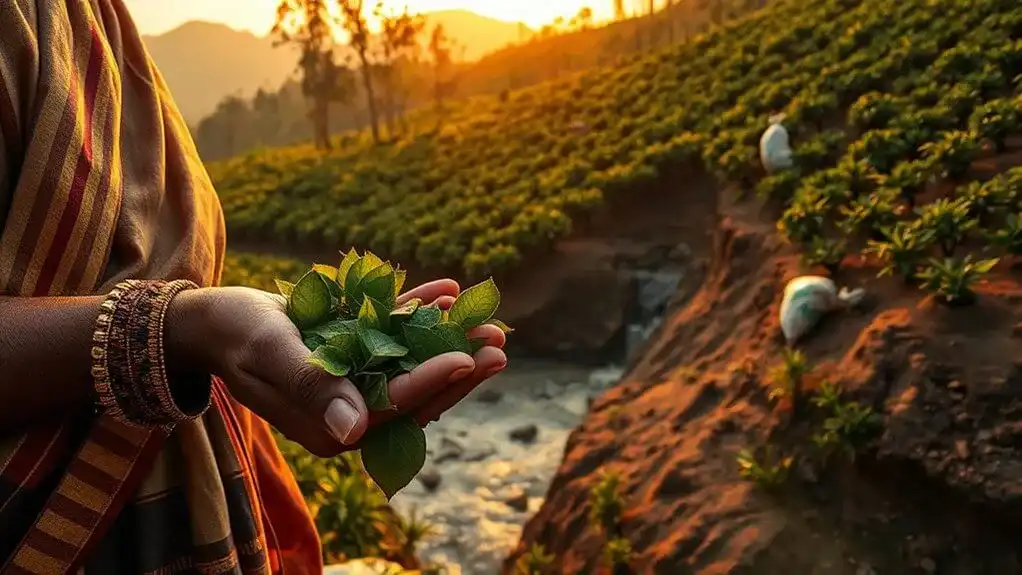
While many tea drinkers savor their daily cup without a second thought, the environmental impact of tea production extends far beyond the kettle. From deforestation to water pollution, the tea industry leaves a significant ecological footprint that's driving the need for environmental awareness.
Traditional tea cultivation often involves clearing forests for plantations, leading to habitat destruction and soil erosion. The widespread use of chemical fertilizers and pesticides further degrades soil quality and contaminates local water sources. The excessive use of synthetic pesticides has been shown to harm beneficial insects and disrupt natural pest control systems. Monoculture farming has severely disrupted natural ecosystems and reduced biodiversity in major tea-producing regions. Even consumer habits, such as overfilling kettles and using plastic-containing teabags, compound these environmental challenges. Climate change poses a severe threat, with studies showing that tea crop yields will decrease significantly by 2050.
The solution lies in sustainable sourcing and reformed production methods. Agroforestry, organic farming, and efficient water management systems can help minimize tea's environmental impact while maintaining crop yields and quality.
Breaking Down Production Costs: From Farm to Store Shelf

Beyond environmental concerns, the economic realities of tea production shape every cup's final cost. The cost breakdown reveals that labor expenses dominate the industry, consuming 30% to 50% of operating costs, with wages ranging from $1 to $3 per hour for field workers and up to $1,500 monthly for skilled positions. Eco-friendly packaging has become increasingly important, with sustainable bags and containers adding $0.50 to $2.00 per unit to production costs. Water and irrigation represent crucial operational expenses, with drip irrigation systems requiring $1,200 for setup and $250 for annual maintenance. Hand plucking remains essential for maintaining tea quality, requiring experienced workers to carefully select the finest leaves and buds.
Labor dynamics fluctuate seasonally, while raw material sourcing adds another significant layer of expense, ranging from $2 to $10 per pound of tea leaves. When combined with packaging costs of $0.50 to $3.00 per unit and distribution expenses reaching $5,000 monthly, the financial picture becomes complex. Marketing budgets typically claim 10% of revenue, while overhead costs, including equipment maintenance and administrative salaries, can reach $60,000 annually, highlighting the intricate balance required for sustainable tea production.
Why Sustainable Tea Commands Premium Prices

Although sustainable tea practices require higher initial investments, they command premium prices due to growing consumer demand and long-term environmental benefits. Today's consumers actively seek sustainably sourced teas, recognizing their value in promoting environmental stewardship and ethical production.
Sustainable farming methods, which avoid chemical fertilizers and pesticides, result in premium quality teas while preserving soil health and terroir. These practices create healthier, more resilient tea bushes that produce consistent yields over time. Hand plucking techniques ensure the highest quality leaves are carefully selected and processed. The implementation of third-party certifications provides powerful validation of sustainable practices and quality standards. Consumers increasingly prefer loose-leaf tea options as an environmentally conscious choice for their daily consumption. While production costs may be higher initially, sustainable sourcing leads to long-term savings through improved soil conditions and reduced chemical dependency.
The market rewards this approach, as environmentally conscious consumers willingly pay more for teas that meet their ethical standards. This premium pricing helps offset the additional costs while supporting fair wages and better working conditions for tea producers.
Technology's Role in Modern Tea Production

Modern tea production has undergone a dramatic transformation as technology reshapes traditional farming methods. Driven by labor shortages and the need for consistent quality, producers are embracing precision agriculture systems that use GPS, IoT, and AI to monitor growing conditions and optimize yields.
Automated harvesting has revolutionized the industry, with machines using advanced sensors and algorithms to select and pluck only the highest quality leaves. This technology not only reduces labor costs but also guarantees uniform quality across production. The requirement for skilled personnel poses an ongoing challenge as tea producers adopt increasingly sophisticated automation systems. Smart kettles and infusers are bringing technological innovation directly to consumers. Meanwhile, drones survey vast estates, detecting plant health issues and applying fertilizers with unprecedented accuracy.
These innovations aren't just about efficiency – they're helping create a more sustainable industry. Smart water management systems, blockchain traceability, and AI-powered quality control are setting new standards for environmental responsibility while maintaining premium tea production.
Small-Scale Farmers and Market Challenges
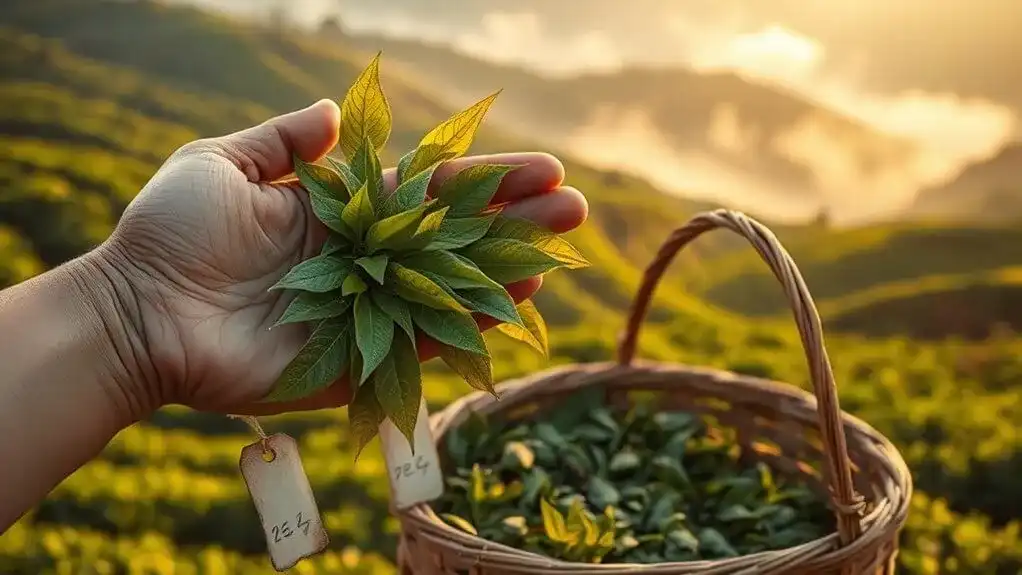
While technological advancements reshape large-scale tea production, small-scale farmers face stark market realities that threaten their livelihoods. Broker dominance in the supply chain greatly reduces their profits, while limited market access and inadequate transportation networks create additional hurdles. Due to the prevailing conditions, Malawian tea farmers receive much less income compared to their Kenyan counterparts today.
Small farmers often struggle with inefficient processing and storage facilities, which directly impact tea quality and market value. Production difficulties have intensified as extreme weather changes create unpredictable growing conditions. To combat these challenges, many are turning to cooperative benefits through farmer collectives, which provide increased negotiating power and shared resources. These cooperatives help bypass traditional middlemen and create direct paths to buyers through digital platforms.
The adoption of sustainable practices and fair trade standards offers another pathway to improvement, though implementation remains difficult for resource-constrained farmers who need support to meet certification requirements and access premium markets.
The Impact of Climate Change on Tea Quality
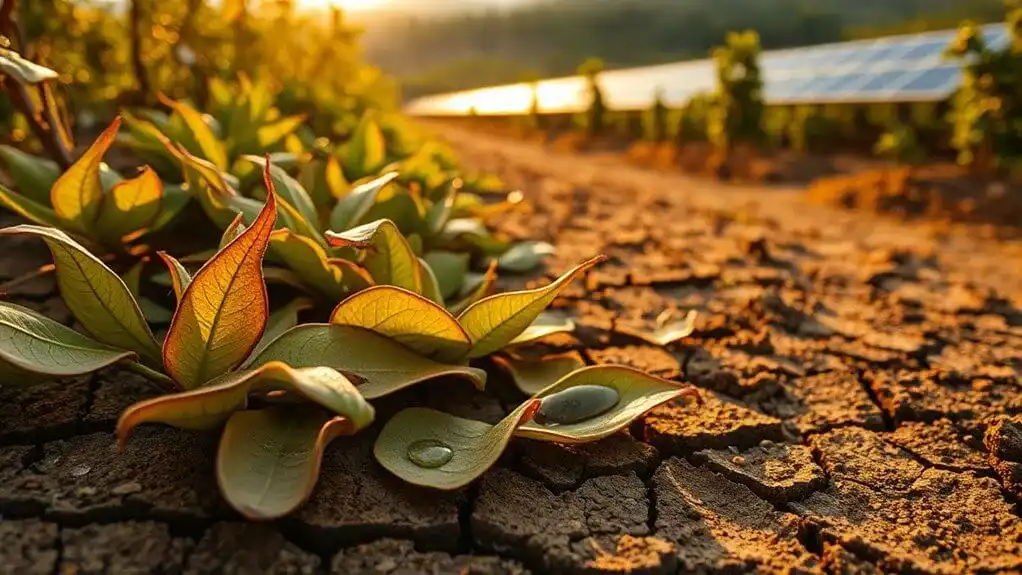
As global temperatures continue to rise, tea cultivation faces unprecedented challenges that threaten both yield and quality across major growing regions. The crop's temperature sensitivity is particularly evident, with just a one-degree increase above 28°C reducing yields by 4% in Assam and 4.6% in Sri Lanka. With the tea industry serving 4.5 billion people globally, the impact of climate change has far-reaching consequences.
Climate change's impact on tea production manifests through:
- Extended droughts reducing soil moisture and photosynthesis
- Extreme weather events damaging tea bushes
- Increased pest attacks and plant diseases
- Frost damage affecting future harvests
To combat these challenges, farmers are implementing climate adaptation strategies, including improved clones and agricultural innovations. The use of compounds like ALA and melatonin shows promise in enhancing cold tolerance, while strategic shading helps protect against frost damage. Changes in weather patterns are causing significant declines in secondary chemical compounds that affect both taste and health benefits. However, projections suggest major tea-growing regions will face significant reductions in ideal growing conditions by 2050.
Certification Systems and Their Effect on Pricing
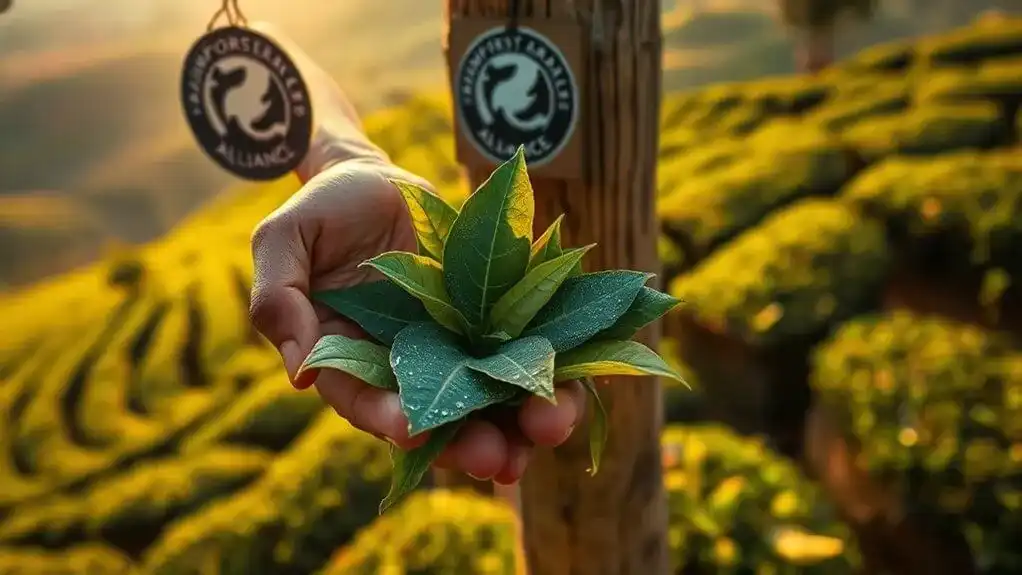
Since the rise of voluntary sustainability standards (VSS) in tea production, certification systems have dramatically influenced pricing structures throughout the global market. While VSS-compliant teas command premium prices, significant certification barriers prevent many smallholder farmers from participating in these lucrative markets. The cost of certification itself, coupled with the need for multiple certifications to meet buyer demands, creates substantial financial burdens. Similar to Texas teacher certification where renewal fees vary depending on timing, tea certification costs can fluctuate based on submission schedules.
Pricing strategies reflect this divide, with sustainable teas selling for up to 625% more than conventional alternatives. The market value of VSS-compliant tea exceeded $155 million in 2019, driven by growing consumer awareness and demand for sustainable products. However, farmers often struggle to recover certification costs, especially when pandemic-related disruptions and limited access to credit compound their challenges. This pricing dynamic continues to shape the industry's evolution and farmer participation.
Consumer Behavior and Sustainable Tea Choices
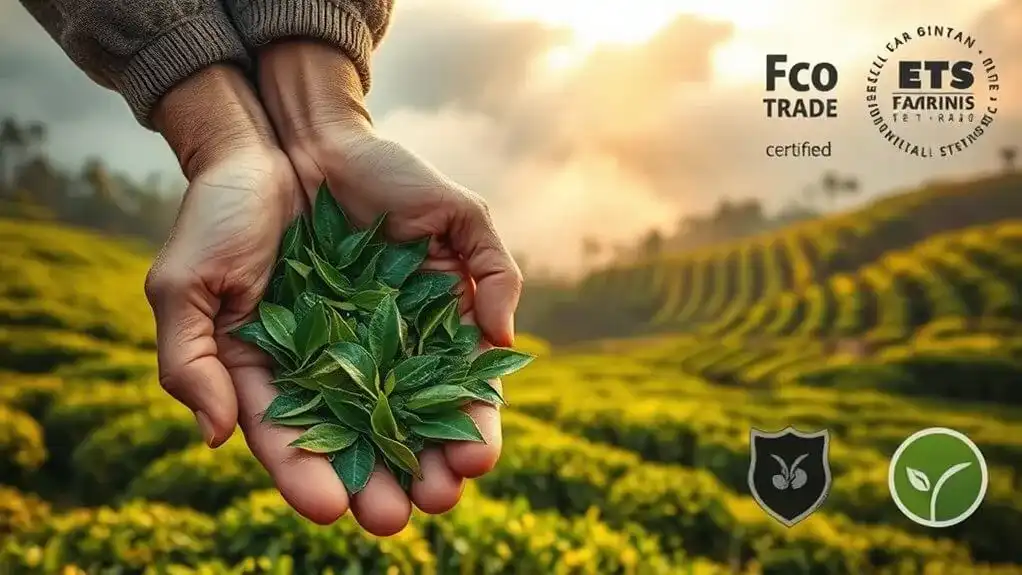
Growing environmental consciousness has transformed how consumers approach their tea purchases, with sustainability becoming a significant factor in buying decisions. Consumer preferences now strongly favor brands that demonstrate commitment to ethical sourcing and environmental responsibility, with over half of German tea drinkers willing to pay premium prices for sustainably produced tea. Consumers are particularly drawn to brands offering functional health benefits, reflecting the broader wellness trend in the tea market. Online subscription services are revolutionizing how consumers discover and purchase sustainable tea options. Recent studies show that organic certification remains the most sought-after verification by tea buyers.
Today's tea consumers prioritize four key aspects:
- Transparent supply chain information
- Eco-friendly packaging solutions
- Ethical production practices
- Environmental impact reduction
This shift in buying behavior has prompted tea companies to adapt their practices. They're now focusing on plastic-free packaging, implementing composting initiatives, and obtaining certifications like Fairtrade and Rainforest Alliance. While sustainability is essential, consumers haven't compromised on quality – they still value flavor, leaf grade, and origin when making purchasing decisions.
Beyond Price: The Social Impact of Tea Production
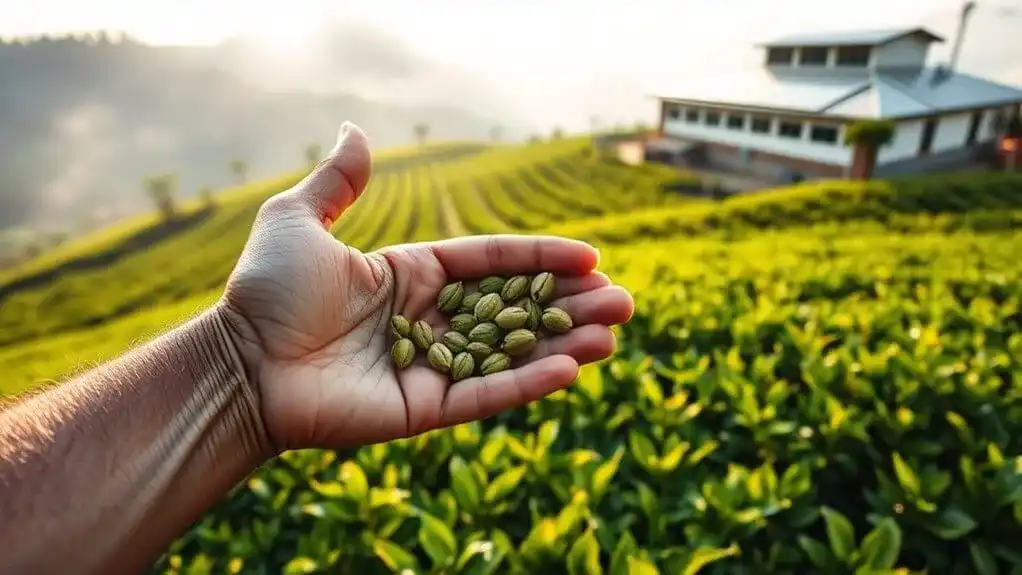
While consumers often focus on the price tag of their favorite tea, the true cost extends far beyond monetary value into complex social implications. The tea industry's challenges include exploitative labor practices, poor working conditions, and significant gender disparities that disproportionately affect women workers. Thirteen million people are employed in the global tea industry, with most working as smallholder farmers. In Nepal's tea sector, women represent 74% of the workforce, facing unique challenges and limited opportunities.
Fair trade practices have emerged as a vital pathway to worker empowerment and gender equality in tea-producing regions. These initiatives promote better wages, safer working conditions, and community development through improved education and employment opportunities. Organizations like the Nepal Tea Foundation demonstrate how sustainable practices can transform local communities by providing stable income sources and fostering environmental awareness. When tea producers prioritize social responsibility, they're not just investing in their workforce – they're building resilient communities that can sustain the industry for generations to come.
Conclusion
Like delicate tea leaves unfurling in hot water, the true cost of tea reveals itself layer by layer. Today's consumers aren't just buying flavor – they're investing in sustainable farming practices that protect both land and workers. While premium prices reflect these environmental commitments, they're nurturing a future where every steaming cup reflects conscious choices. The tea industry's transformation shows how environmental stewardship and social responsibility can steep together perfectly.

